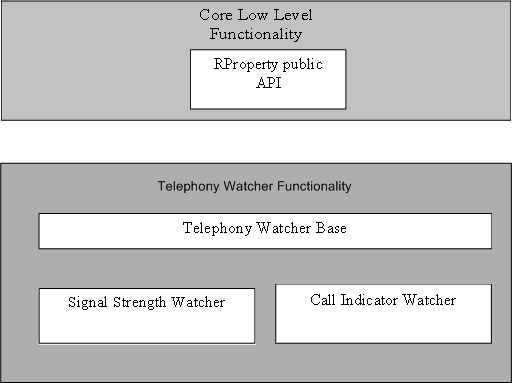Architecture
This topic describes the architectural relationship between the telephony watcher classes.
The telephony watcher is contains two main components:
In the diagram the core low level functionality is the publish and subscribe mechanism. The client applications must use the RProperty functions to get the notifications. Telephony watcher functionality is the watcher framework.
The watcher framework
The watcher framework is provided by watcher.exe. The watcher and the plug-in run in the same thread. The telephony watcher framework does the following:
creates and starts the plug-in objects
provides an asynchronous interface for the plug-ins
creates the communication link with the telephony server to get the information
maintains the plug-ins and the watcher framework in the same thread
provides updates to the client applications
provides error corrections in the communication between the watcher framework and the telephony server
uses the comms debug utility to log the events
deletes the plug-in objects
Watcher Plug-ins
The watcher plug-ins are loaded by the watcher framework. The plug-ins are implemented as DLLs. The primary functions of the watchers are to monitor the telephony activities and publish the information with the publish and subscribe. The two watcher plug-ins are:
Copyright ©2010 Nokia Corporation and/or its subsidiary(-ies).
All rights
reserved. Unless otherwise stated, these materials are provided under the terms of the Eclipse Public License
v1.0.
